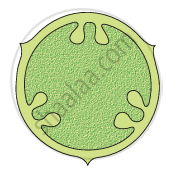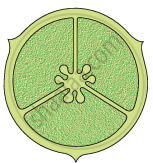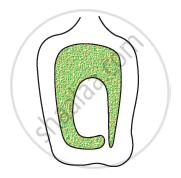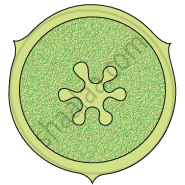Advertisements
Advertisements
Question
Describe the various types of placentations found in flowering plants.
Solution
Placentation refers to the arrangement of ovules inside the ovary. It is of five basic types.
(A) Marginal placentation:
The ovary, in which the placenta forms a ridge along the ventral suture of the ovary and the ovules develop on two separate rows is known to have marginal placentation. This type of placentation is found in peas

(B) Parietal placentation
When the ovules develop on the inner walls of the ovary, the ovary is said to have parietal placentation.

(C) Axile placentation
In axile placentation, the placenta is axial and ovules are attached to it. Examples include China rose, lemon, and tomato.

(D) Basal placentation
The ovary in which the placenta develops from its base and a single ovule is found attached to the base is said to have basal placentation. It is found in marigold and sunflower.

(E) Free central placentation
In free central placentation, the ovules develop on the central axis while the septa are absent. This type of placentation is found in Dianthus and primrose.

APPEARS IN
RELATED QUESTIONS
Define the following term:
Aestivation
Define the following term:
Placentation
Define the following term:
Epipetalous Stamen
Define the following term:
Perigynous flower
Differentiate between apocarpous and syncarpous ovary.
A typical flower has 4 different kinds of whorls arranged successively on the swollen end of the stalk/pedicel is called
In a flower, withing a whorl, sepals or petals touch each other at margins without overlapping such flower is of :
Fertile part of stamen is ______
Diadelphous stamens are found in ______.
Differentiate between pollen and pollenium
The mode of arrangements of sepals or petals in a floral bud is known as aestivation. Draw the various types of aestivation possible for a typical pentamerous flower.
The arrangements of ovules within the ovary is known as placentation. What does the term placenta refer to? Name and draw various types of placentations in the flower as seen in T.S. or V.S.
